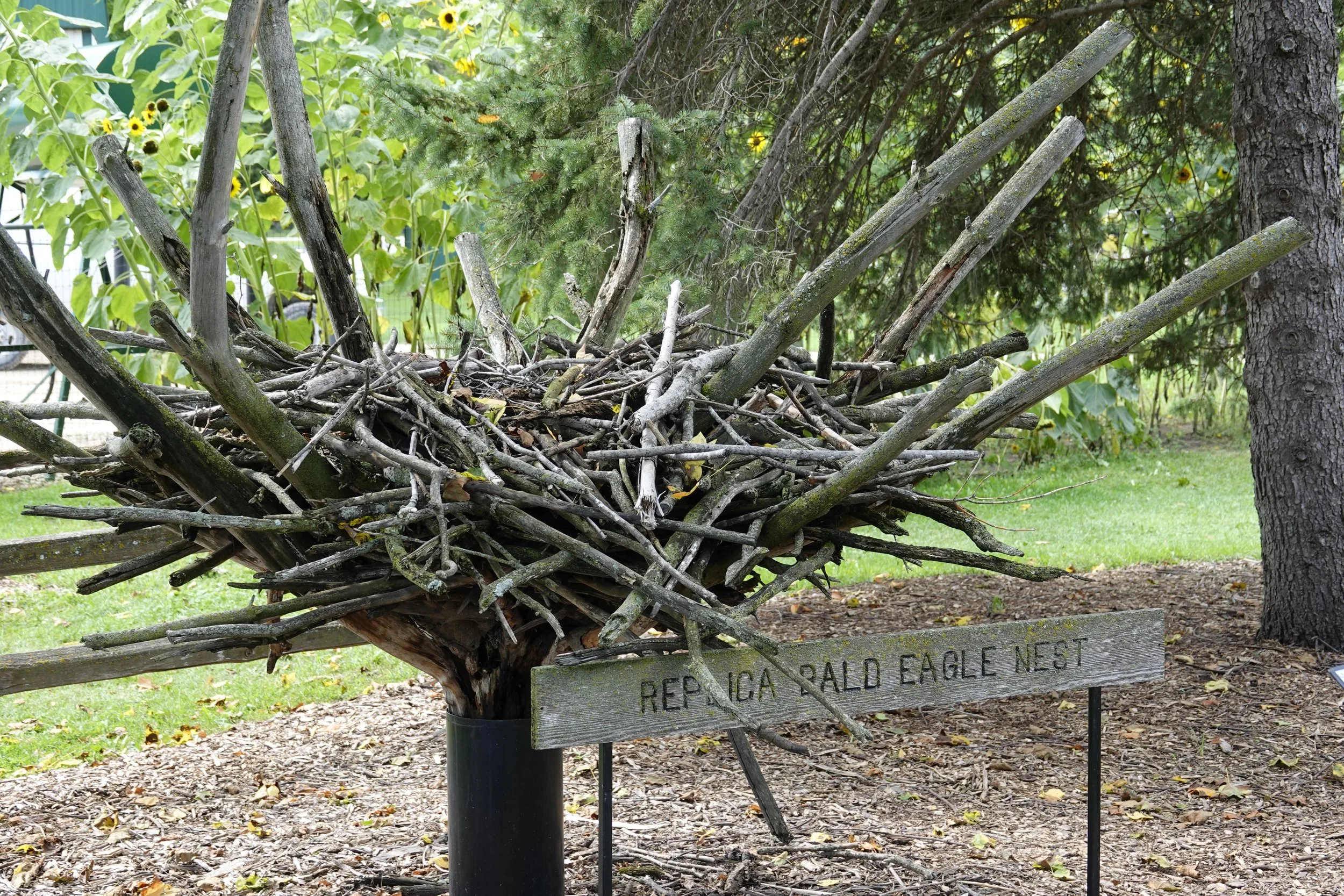Hedgehog caterpillars hibernate
Naturally
The first week of November found me doing a lot of walking in Winona, often in the company of woolly bear (woolly worm) caterpillars. The caterpillar is the larval form of the Isabella tiger moth, a white to orange to yellow moth that flies around lights on summer nights. The woolly bear is the Punxsutawney Phil of insects. One folkloric belief is that the direction the caterpillars travel foretells the severity of the upcoming winter. If they’re headed south, they’re running away from the looming cold; if they crawl north, it means winter will be mild. There’s not much merit to that tall tale. More’s the pity. The more common woolly bear prognostication suggests the width of the caterpillar’s brown band can predict the severity of a winter. A wide band means a mild winter and a narrow band means winter will be harsh. Since the brown band typically grows wider with each molt the caterpillar completes, it’s more of an indication of age, nutrition and genetics. This caterpillar forecast has been around since colonial times, but it became popular in 1948, when the curator of entomology from the American Museum of Natural History, Dr. Howard Curran, did a study. He went to Bear Mountain State Park, New York, and examined woolly bear caterpillars, paying particular attention to the brown bands. Based on those, he made a winter prediction, which was picked up by the New York Herald Tribune. The wooly bear caterpillars had predicted a mild winter, which turned out to be correct and the story spread around the country. The caterpillars are woolly bears and they hibernate like bears, except the caterpillars stay cold. It’s beyond cold; they freeze. Some people call them hedgehog caterpillars because they roll into a ball and play dead when disturbed. Please don’t blame them for the winter. Another bit of winter weather lore I’ve heard often is for every fog in August, we’ll get a day with snowfall. I’ve always wanted to check that, but I never remember to count the fogs in August because of my brain fog.
I stood under a large oak. I often walk by the big beauty. Squirrels were squirreling away the fallen acorns. Oaks can be 900-year-old trees–300 years of growth, 300 years of stasis and 300 years of decline. Most species of oaks begin producing acorns at about 20 years of age, with peak mast production occurring at around 50 to 80 years. An oak tree is in the genus Quercus. “Quer” means “fine” and “cuez” means “tree” in Celtic. An oak’s root zone extends beyond the drip line of the tree. The drip line is the outermost edge of a tree’s foliage.
A single pair of breeding chickadees needs 6,000 to 9,000 caterpillars to rear one clutch of young birds, according to Doug Tallamy, a professor of entomology and wildlife ecology at the University of Delaware. A black-capped chickadee weighs as much as four or five pennies.
I’ve seen teams of workers wearing bright vests digging around utility poles. They check the poles for rot and decay. I wonder what all they encounter in their excavations? Soil is alive. There are far more species of organisms in the soil than there are aboveground.
Q&A
Duane Miller of Hartland asked if hummingbirds have a pecking order? Hummingbirds have an instinct to protect food sources, so they do have a dominance hierarchy. This leads to constant battles at feeders. If you know someone who enjoys watching movies featuring car chases, tell them to watch hummingbirds at feeders. The chases are nearly endless.
“Why do hummingbirds spend a longer time in a nest than many other songbirds?” The hummingbird nestlings spend 18-22 days in the nest, whereas the average songbird, if there is an average songbird, is in the nest for 12-14 days. It’s all about mobility. A young robin leaving the nest could hop, walk and climb until it’s mature enough to fly. A hummingbird nestling cannot do those things. It needs to be able to fly skillfully enough to find safety from weather and predators. The extra time in the nest allows it to become developed enough to give it a shot at survival outside the nest.
“What songbirds have the longest tails related to their bodies?” The U.S. Fish & Wildlife Service says four North American songbirds have tails making up half or more of their body length. They are the black-billed magpie, yellow-billed magpie, scissor-tailed flycatcher and fork-tailed flycatcher.
Thanks for stopping by
“I seldom get down or depressed. I don’t want to waste a minute when I could be enjoying life.”—Dick Van Dyke.
“You can have all the money in the world, but there’s one thing you will never have… a dinosaur.”—Homer Simpson.
Do good.
©Al Batt 2021
A scissor-tailed flycatcher catches the eye. My mother told me to never run while carrying scissors. This bird’s mother didn’t tell it to never fly with scissors. Photo by Al Batt
Woolly bear caterpillar.
Woolly worm caterpillar.
It was white on top on Friday.
Common milkweed seeds are traveling on the wind.
I hope one day this will lead to monarch butterfly caterpillar chow.
I was surprised to see me on the wall of the wonderful Waseca Music Store and surprised again to see my image is just above Journey and just below Bob Dylan.
The bowed head of a sunflower plant gathered snow.
Turdus migratorius. His friends call him the American r.obin.
Lake Park on Lake Winona in Winona, Minnesota. Winona is named after the Dakota Sioux woman who was said to be the daughter of Chief Wabasha or Chief Red Wing and for the Dakota Indian word "We-no-nah" meaning first-born daughter.
A group of Double-crested Cormorants is called a gulp. And why not?
Oxbow Park near Byron, Minnesota.
The Blue Jay wet ‘em.















